
Janet Guthrie
The first woman to qualify for the Indianapolis 500
ESPN: 30 for 30
By: Patrick Donovan – Author/Screenwriter/Freelance Journalist
Seattle, WA (Around Town News) 6/13/2019
Originally published in The Hollywood Times: republished with permission by The Hollywood Times – Valerie Milano; Publisher/Editor
“…I want to be remembered as damn good racing driver…” – Janet Guthrie
Notes from ESPN:
In the world of Motorsports, the Indianapolis 500 has long been considered ‘the only race’. In May 1977, Janet Guthrie earned a place among the prestigious field of 33. A year later, overcoming impossible odds, Guthrie cobbled together her own team for a stunning success. Yet just when her career should have rocketed forward, it suddenly, inexplicably stalled.
Directed by Jenna Ricker (“Ben’s Plan,” “The American Side”) with producers Caroline Waterlow and Nina Krstic (“O.J.: Made in America”) and Greg Stuhr (“The American Side”) comes the story of a female athlete breaking boundaries. What Janet Guthrie accomplished in the male bastion of mid-70s American motorsports, stands as a testament to one woman’s determination and skill – the kind too often relegated to the margins of history.
The review by Patrick Donovan
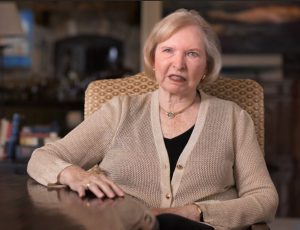
It was widely known that female participation of any sort at Indianapolis was discouraged and essentially banned throughout the first several decades of competition. As such, female reporters were not even allowed in the pit area until 1971. There have been nine female drivers to qualify, starting with Janet Guthrie in 1977. She loved driving and felt at peace behind the wheel.
Barely making a living, with a broken car, no jewelry, no husband, no money, and no insurance, she was facing the end of racing even before she got her start.
Then got a phone call from Rolla Vollstedt asking, “How would you like a crack at the Indy 500?” She called Chris Economaki and asked who is Rolla Vollstedt?
Historical Note: Christopher “Chris” Constantine Economaki was an American motorsports commentator, pit road reporter, and journalist. Economaki was given the title “The Dean of American Motorsports Journalism.”

The Indy 500 has been the Superbowl of Racing since 1911. Rolla Vollstedt was a car builder and a car owner and the last of the low-budget car owner/builders who loved the sport with a passion. He would always find talent, top Indy names, Gordon Johncock, Tom Sniva, Cale Yarbrough, Johnny Rutherford, Mario Andretti and more. Rolla was an innovator and visionary. He would find these guys but never have the budget to keep them.
She was excited and then cautious because she knew that this was her one and only shot. She was limping slightly and said that she twisted her ankle. Later it was found out she actually broke it and drove with it on this trial run to see if she could actually make the car go fast enough. She fought through the pain and dealt with it, in a private run on California’s Ontario Speedway with no press and no announcements unless she was successful. To tell you how driven Janet was, she got in the bathtub and soaked her cast off her leg. That’s the determination she had, the guts and the drive that made her a champion.
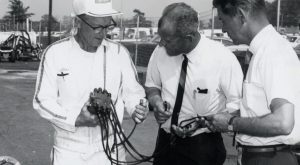
Janet felt that because her past racing experience of driving on open tracks, driving at Indy was different with the wall and chain linked fence. It gave her the feeling that she was too close to the wall. So, being an engineer herself, she took a piece of welding rod, bent it 90 degrees and taped it in the passenger side of Rolla’s rent-a-car. Using it as a “wall-tickler”, she knew when she was too close to the wall after driving a few laps. Dick Simon came over to the side of the car to see what was left of the welding rod and he saw the door handle was scratched. Janet then got into the Indy car and drove it like a champ. The decision was made by Rolla to GO FOR IT.
Early in her life, Janet started out as a flyer with a commercial flight instructors rating. Her father was a pilot and taught her how to fly. She decided that she wanted to parachute out of a perfectly good airplane but the only way her father would let her do that was if he flew the plane. Flying was her first love and jumping out of an airplane gave her that feeling of freedom. She flew for the military and would take to a career in aeronautics and aerospace engineering.

Her first car is a Jaguar XK-120 Coupe. It’s still considered the most beautiful cars in the world with a groan that you can hear coming for you. She was introduced to race car driving in the parking lot of work where other cars were there going around a course with cones. She loved it, stopped being an aerospace engineer and started on the track to become a race car driver.

At the time she wasn’t part of the feminist movement because she was already playing on the same field with the big boys and she didn’t have any problems with it. When they announced she was going to race Indy, to her astonishment, not everyone was that enthusiastic. She was not only invading auto racing but at the top of auto racing. She stood on her record which was second to none. That didn’t seem to “cut the mustard” with the men. The groaned, “She’s a woman”, “She’s going to sell sponsorship”, “She’s going to get the press”, “She going to get ‘hurt’”. The old guard men were jealous.
Janet was to be one of the first women, but Arlene Hiss entered before Janet in the Phoenix 500. Janet entered and raced but was black flagged and because she was going too slow. They were so paranoid and was criticized. This dogged Janet’s chances for months. Her performance would be closely observed at Trenton’s race before she would be permitted to race at Indy and that race began to change a lot of minds!
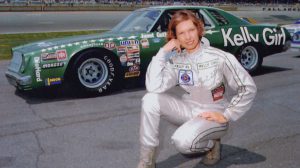
She knew the Blue Car was not optimal and it needed a new engine. Then she got a call from Coca Cola. They made a commitment to pay her $500.00 and having her appear on all their “Tab” cola cans that were to be pink. She was insulted and walked away. Then a word with AJ Foyt and a chance in his backup car. There was an offer from NASCAR floating around. They wanted her to run in a race the same day as Indy.
This was her chance to prove she could make it. Men in regalia were not happy. She qualified for the race in 27th position at Charlotte Speedway. Slowly but surely, she was making it. NASCAR was a different world. She saw that she could drive and was good for business.
Then it was to Daytona. She was competitive and that’s what’s needed to get sponsors. The more she ran the better she got. She was a force to be reckoned with. Rolla was not happy, but she was the top rookie throughout. She was having a ball and getting attention. Her life was being molded and then Talladega and qualified right behind Richard Petty.
She got a call from Pat Patrick with all the top stuff and told her she had to dump Rolla Vollstedt. He walked out when she refused to fire Rolla. She was loyal to Rolla and with his new car she pushed it up to 190 then hit a wall. She needed help; Phil Casey was introduced, and he got there just in time. Jim Lindholm called to help. The team was assembled.
- The first day of qualifications comes with engine problems.
- Second day of qualifications: something wasn’t right.
- Third day of qualifying: still problems, the car shutters.
- Fourth day of qualifying with oil pressure at zero; she was focused 110%…and on May 22nd, 1977, she became the first woman to ever qualify for the Indy 500 with a speed of 188.403 mph.
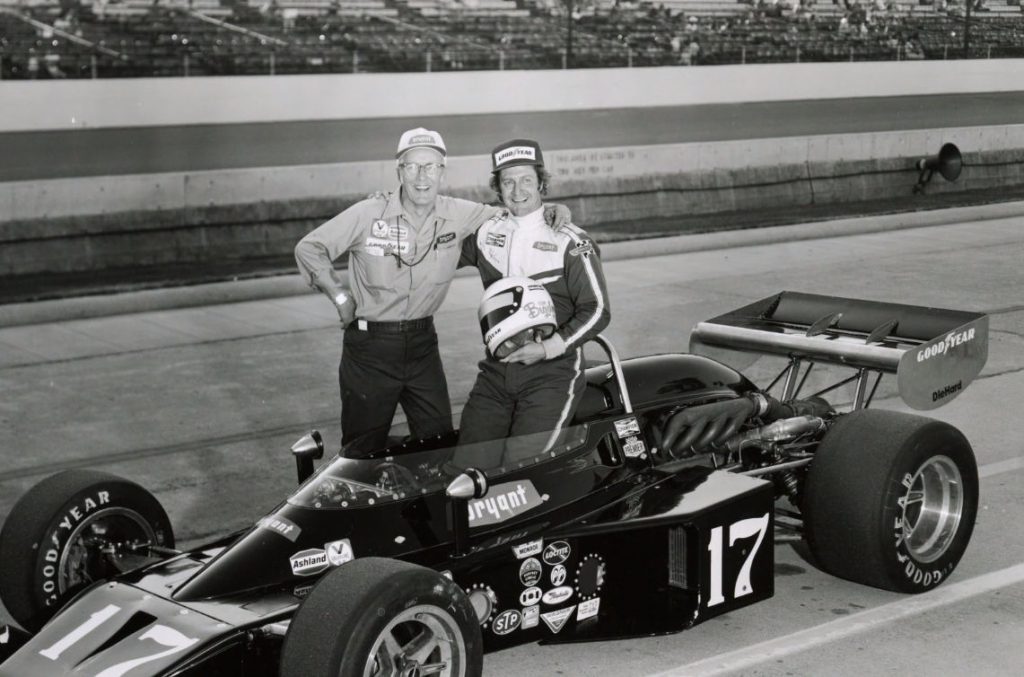
The problem: Does Tony Holman, the announcer who calls “Gentlemen, start your engines!” continue with that because even though the drivers don’t start their own engines, the mechanic does, or does Tony use another phrase. Another lady, Kay Mignatti the wife of the senior mechanic of Indy, who herself, had a USAC Mechanic license would be starting Janet’s car and standing with Janet against Tony Holman.
Janet became a key figure that women were pointing to and she became a reluctant pioneer like Amelia Earhart and all women who came before her. In the day before the race, the drivers would be in a parade and fathers would hold their daughters on their shoulders to show that there was some hope for their future seeing Janet.
It was the day of the race and Tony Holman stated, “In the company with the first lady to ever qualify for the Indianapolis 500, Gentlemen start your engines…” Today, all announcers say, “Drivers, start your engines.”
Janet fought the press, the cohesiveness within the crew was starting to fall apart and a time came when she had to make money/sponsors putting her on a race-by-race basis and with only 3 companies that had the moxie to sponsor her. Where were all the other companies? Was it because she was a woman? She did everything she could, constantly getting another ‘NO’ from 200 to 300 companies. Then she went on Good Morning America and spoke her mind about not getting sponsors. This drove home her desire to race and she got a call from Texaco. She now had 30 days to do what they said couldn’t be done, Janet was off to the races! She had to go from being a team owner and leader and spokesperson for Texaco to be the driver. Then George Mignatti put his wildcat engine in the car.
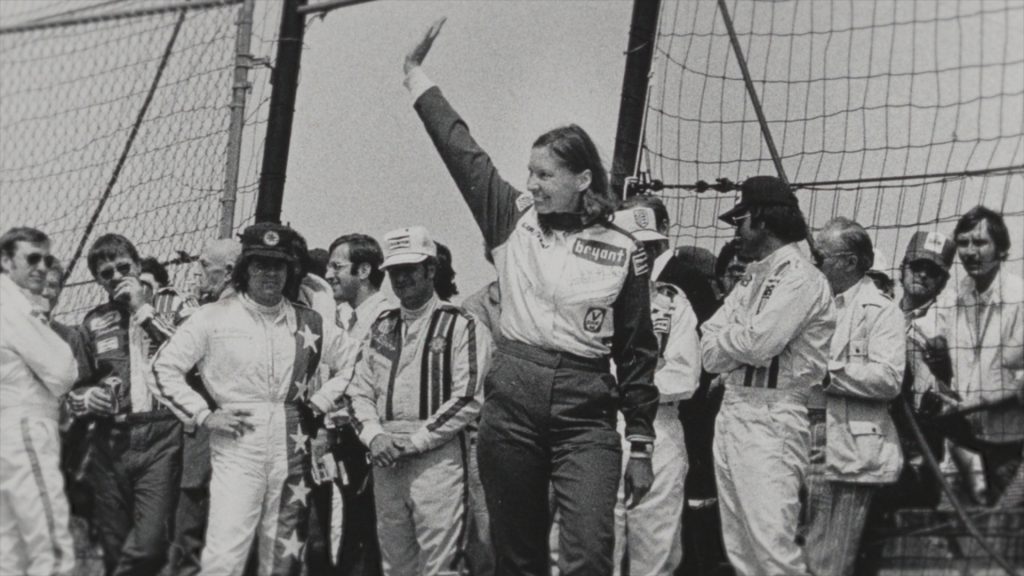
She once again qualified for Indy and she was going faster than George Mignatti thought his car could do. He was as giddy as a schoolboy in a candy store.
The night before the race, at a tennis club, while playing, she tripped and broke her wrist. The problem was the gear shift. She could steer with her right hand, but she needed to shift with her left while driving with her right. Even with problems, she persevered. They were really optimistic after the last pit stop and almost the end of the race, she gave it her all and blew past the 9th place driver and into the top 10. She climbed a mountain reserved for men beating Mario Andretti who finished in 12th. She revealed that she was driving with only one hand and said, “Who said women can’t do this…”
In 1982, in an interview with Howard Cossell, she opened up that racing was sexist and not a place for women. By stating her case, it was time for the truth knowing full well this could end her career. She drove through that interview like all her other challenges in life, without fear. Janet did what had to be done. It would be another 13 years for a new breed of women to follow. Those women would be:
- Desire Wilson
- Lyn St. James
- Sarah Fisher
- Danica Patrick
- Mika Duno
- Simona de Silvestro
- Ana Beatriz Figuereido
- Pippa Mann
- Katherine Legge
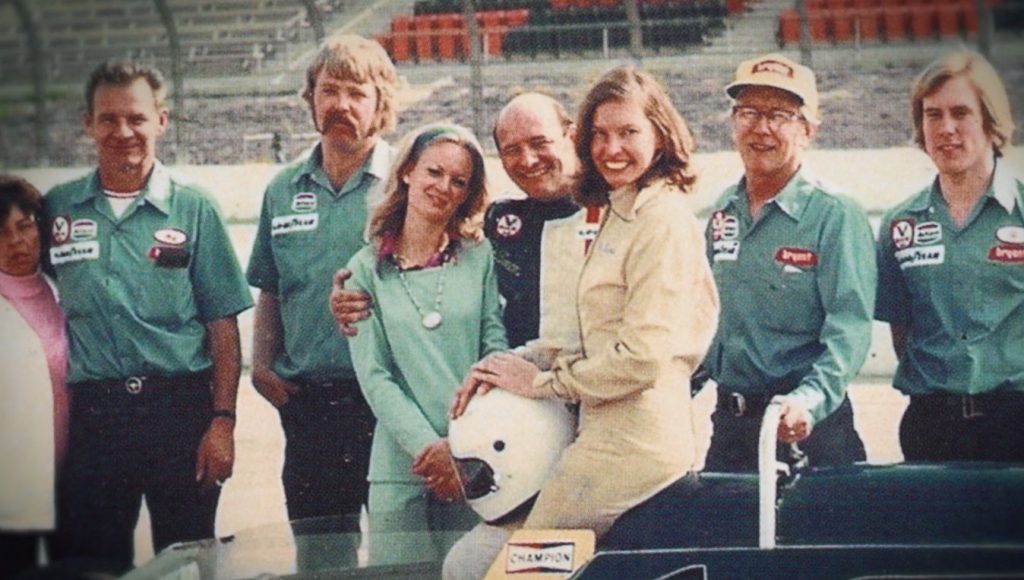
For Janet, being able to compete in two of the most upper levels of auto racing, NASCAR and Indy, was the highlight of her life. She broke the rules and for a long time she avoided Indy after she left the sport. But has returned on occasion for public events and to simply, remember. You’d think she’d ought to be content with her successes but she’s not. She’s still recognized today and wants to be remembered as a damn good racing driver and a lady but in reality, she’ll skip the lady thing and just be remembered as: A DAMN GOOD RACING DRIVER and that’s lady-like enough for me.
Special Supplement
An exclusive Q&A with the producer and director Jenna Ricker and producer Caroline Waterlow. These ladies give a wonderful insight to the making of the film.
Patrick: I really enjoyed watching the story of Janet Guthrie with her perseverance, drive and determination. Can you tell me what it was that drew you to Janet’s story and why you wanted to make the film?
Jenna: I was immediately drawn to Janet’s tenacity and equally intrigued by her unflappable personality. In the face of such hostility, I admired how she got on with what she felt destined to do while everyone else was busy freaking out that “she’s a woman!” She would probably cringe at this, but she is a maverick. Here’s a woman who parachuted at 16, got her pilot’s license at 17, hitchhiked around Europe at 19, got a physics degree at 22, and landed her first job as an aero-space engineer upon graduation. All before 1963 and before ever stepping into a race car.
I’m an Indy 500 fan and I didn’t know who she was until a few years ago. Janet’s story felt marginalized, or worse, forgotten by history, and I wanted to be part of reintroducing her achievements to a larger audience. She followed her dreams at great personal sacrifice, including risking her life, and I believe that’s a universal theme that many can relate to, and hopefully be inspired by.
Caroline: I have always loved stories about adventuring & rule-breaking women so it was exciting to come upon one that we knew we could make a good film about –having access to Janet & her personal account and also having strong archival to show her in her heyday; seeing the powerful visuals of her in her helmet and racing suit behind the wheel in the 70s is just so damn cool! I was enthralled with it because I had never seen it in real life so that drew me to her. Jenna and I both grew up loving & being affected by 70s shows like Charlie’s Angels and the Bionic Woman….Janet felt like a real-life version! I am also always fascinated by what characteristics & events propel a person to be the first to do something barrier breaking.
Patrick: Please tell me how you felt about Janet’s story, personally, and if it played a role in your desire to make this documentary, as women in the entertainment industry?
Jenna: As I researched Janet’s story, well before reaching out to her for this project, I was surprised at the kinship I felt with her. It definitely motivated me to pursue making this documentary. I’m not going toward a wall at 200 mph, but the dynamics of what it takes to achieve our respective dreams has many parallels. In my case it’s getting others to believe in my vision for a film, back it financially, and then finding a talented team that brings it across the finish line. The film industry (like many) remains a predominantly male dominated field. But, like racing, it’s a field where gender just shouldn’t matter. The equipment does the heavy lifting and the rest lies in the will of the execution. Good stories transcend time and place, and I hope others find themselves reflected in Janet’s journey.
Caroline Any woman doing anything anywhere can likely identify with some part of Janet’s story! At one time or another, we have all experienced being underestimated, not having the same access and not being paid as much. Trying to get funding for a film or say a start-up company….we all face the same challenges and at some point the people doling out the money have to take a chance on you & have confidence in you and if you don’t look like the traditional version of what a director, or a CEO or a racer has always been…it’s just harder!
Patrick: Thinking about Janet’s story for a moment, there was a time during the film when I believe it was the parade before the Indy 500. She recounts that fathers held their daughters high up and, on their shoulders, so that they could see ‘hope’ for their future. Can you tell me if you see any aspects of Janet’s story an integral part of your life-story and if so, how?
Jenna: That’s one of my favorite moments of the film… I think for many women, myself included, our first relationship to men and gender expectations is via our fathers. My father was unabashedly supportive of me growing up, but he was also the first person I can recall to tell me that I couldn’t do something because of my gender. We were driving by a stadium where a pro-soccer match was underway. I loved and played soccer and said from the backseat, “I’m gonna do that when I grow up!” He was conciliatory when he broke it to me, “Honey, they don’t have professional women’s teams.” And, at the time they didn’t. But, it was a blow to learn for the first time that my gender could prevent me from doing something I loved. So, when I think of that moment in the film, I think of how very important it is for fathers, and men generally, to support and participate in a future full of more gender parity.
Caroline: I think we are all affected & shapeed by the images around us and in our pop culture, the stories that our culture deems as important and worth telling. When I first heard Janet’s story, I felt like one of those little girls on the parent’s shoulders being instantly in awe of her. Its so important to see women like Janet and hear stories like hers….pilot, racer, engineer….to know these are options and it seeps into your psyche. So I wanted to help tell her story to create something that will make its way into people’s imagination. When I was growing up…seeing people like Martina Navratilova at Wimbledon or Mary Tyler Moore being a producer on TV…clearly shaped me in many ways early on.
Patrick: In today’s world of @meToo and @leaveWomenAlone, how does Janet and her story help to empower women to become bolder and stronger as what I believe is their constitutional rights being taken from them state by state? Does it want to make you stand up and cry “foul” where it appears that women are being “controlled” as the last vestiges of extreme conservativism is falling away?
Jenna: I hope Janet’s story empowers women to appreciate their strengths and capabilities. There’s tremendous value for women (and men) in witnessing her achieving against the odds as an example of what’s possible. It can feel very defeating to realize that 42 years after Janet’s amazing barrier breaking, we’re still rolling a boulder up the same mountain of patriarchy. But, I hope the bigger takeaway is the determination to move forward despite that. Women having agency to advocate for themselves and what they deserve raises the tide for everyone.
Caroline: In the US we live with a rhetoric about freedom and justice and meritocracy….but we all know the system has to be constantly challenged to live up to this and the movements you cite are all part of that. And we need brave people to do the challenging- people like Janet! The sports world is a particularly powerful place we see these tests play out around race and gender and it affects the larger culture….so a historic and traditional place like the Indy 500 is the perfect venue for challenging the system.
Patrick: Do you believe that Janet was being treated as less than a full adult human because of her entrance into racing, the golden mountain of a man’s world? Do you feel by doing this film, you have made a difference to show that women ARE strong and, in some cases, even stronger than men? And finally, what message do you want to send to anyone seeing this film, especially young women coming up in the world?
Jenna: I do believe that Janet was treated as less than in many ways. She entered the male-bastion of motor sports when the sport was even more dangerous than it is today, and where the only women down in the pits were beauty queens. They considered her an invading interloper and treated her as such. The sexism in the archive is insidious and there was plenty we had to leave on the cutting room floor!
One of the things that attracted us to this story was that racing is one of the only sports where men and women compete on the same field at the same time. In that way it seems a perfect example of how the merit of performance should be gender less. The ironic thing is that there are factors that could make a female driver more suited to race car driving than a male, for example, they weigh less = less fuel used, they have proven better endurance skills = handle 500 miles on a hot track. But, as you see in the film, that was/is not the case. Janet proved herself time and time again, and that endurance alone should prove how strong women are.
If audiences are left to consider what might have been had Janet shared the opportunities of her male counterparts, then hopefully it adds to the evolving conversation of merit versus opportunity that many women and minorities face. I would love for young women coming up in the world to, as Janet says in the film, see this and say “Look! If she can do it, I can do it.”
Caroline: When you hear some of the comments and even just the casual sexism used by reporters talking about her — she was definitely treated differently! And the future of her gender being able to compete in Indy Car racing seems to rest entirely on her shoulders. So somehow, she has to focus and tune it out and not let that pressure overwhelm her and she manages to do it with such grace-there is such power in that.
I hope in making the film we help to reshape the image of what a racer can look like. And as Janet’s brother so eloquently says in the film—- “Janet demonstrates that with energy, confidence and determination, you can do what you want—and you SHOULD!”
Patrick: What’s next for you ladies?
Jenna: Among other projects (filmmakers, like racers, are always working on their next ride), we’re working on the narrative version of this film. There is so much story that would never have fit in a doc, so I’m excited to further develop those in the narrative.
Caroline: Along with the narrative Jenna mentioned…. I am currently working on a documentary about Brighton Zeuner — a teenage skateboarder who is headed to the Olympics in Tokyo next year. Skateboarding will be an Olympic sport for the first time in 2020. This is also a sport that you only really saw boys really doing when I was growing up and so many talented women now are competing and starting really young. It is very interesting to work on a story now about a female athlete coming of age after working on Janet’s story reflecting back.
Photo Credits: ESPN and other royalty free photos
Website: www.JanetGuthrie.com
ESPN: http://www.espn.com/video/clip?id=26648895
ESPN 30for30 is back: http://www.espn.com/30for30
